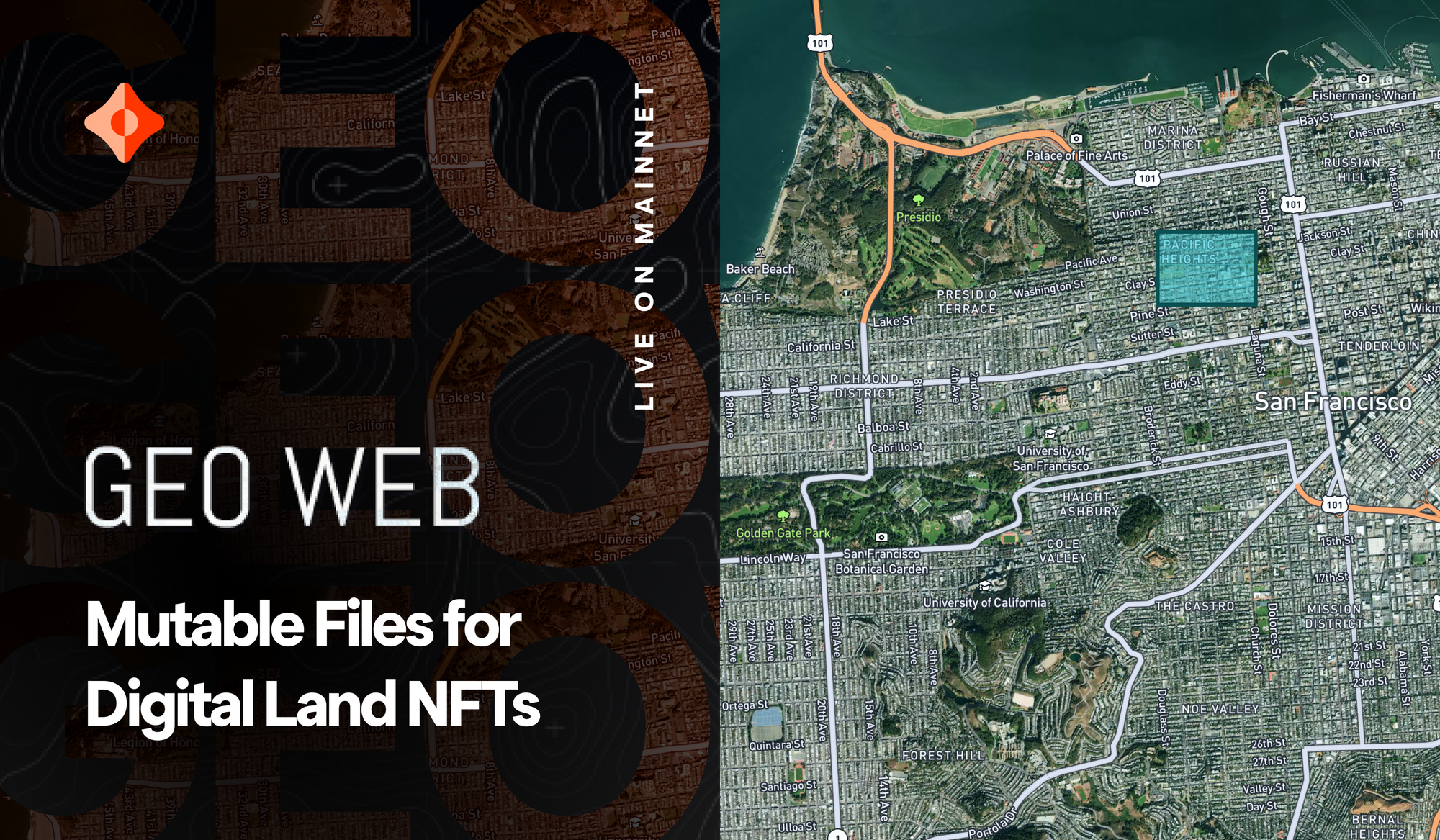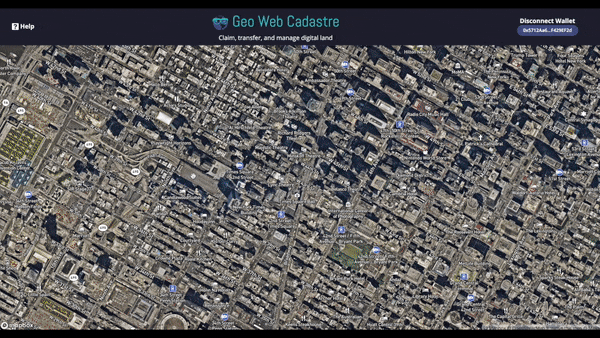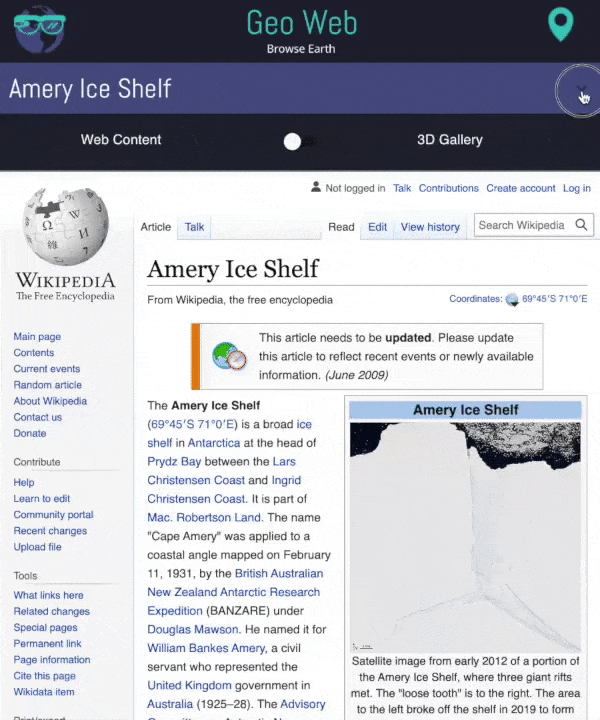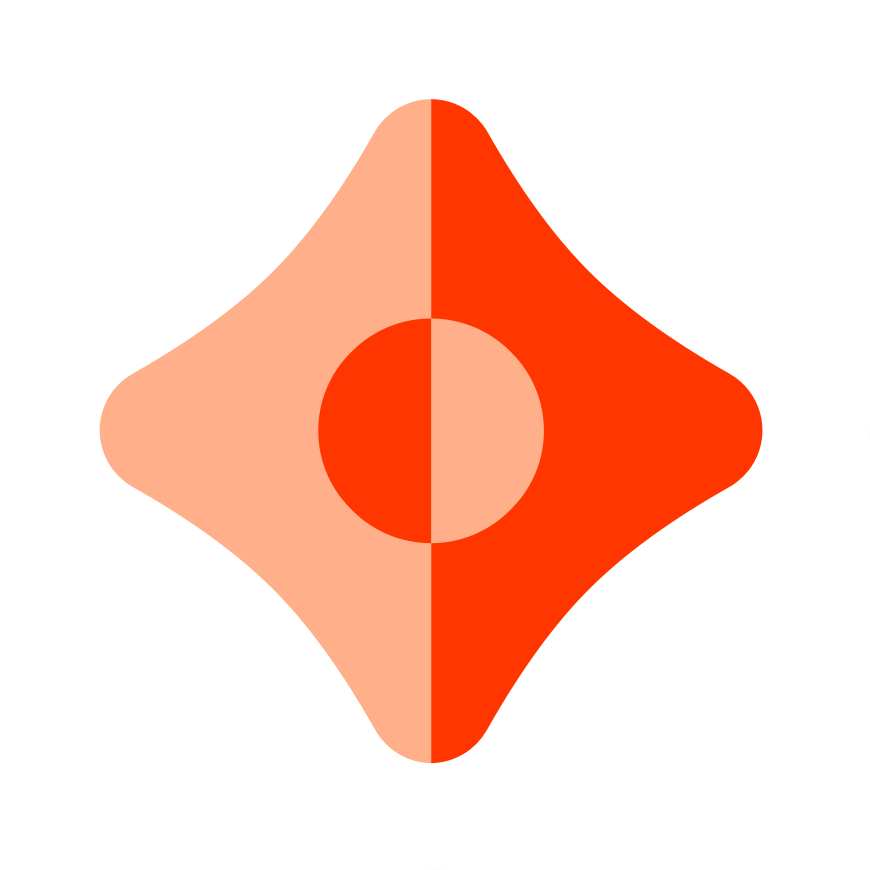Geo Web is connecting digital content to the physical world with NFTs and Ceramic
Learn how Geo Web is creating an open and fair AR metaverse by combining Ceramic, NFTs, and Harberger taxes.

The COVID-19 pandemic has given many consumers their first taste of virtual content tied to physical locations, with restaurants around the world replacing menus with QR codes for customers to scan. This trend is accelerating, with augmented reality (AR) and integrated digital/physical experiences becoming more commonplace. But the merging of our physical and digital worlds can't really take off while we rely on QR codes posted everywhere or siloed smartphone apps for each use case.
Geo Web is creating a set of open protocols to anchor digital content in the physical world on a shared, fair, decentralized network. By using NFTs and a creative system of property rights, Geo Web hopes to create the virtual land layer that can be overlaid on the offline "meatspace" for any use case.
Decentralizing ownership of the web's AR platform
As augmented reality (AR) technology matures and it becomes easier to layer digital content into physical spaces, a key question becomes "who controls the platform?" With a purely open, unconstrained platform there will be competing content that drowns out high-value data with noise and spam. And with closed, proprietary platforms, one dominant gatekeeper could exert massive power.
Geo Web co-founder Graven Prest first started thinking about geospatial AR after seeing one such platform in 2014:
I realized that whoever created that platform would control a global virtual real estate market.
Unlike with virtual reality (VR) and "other metaverses," with AR it's likely important that we all share a single platform so that we can interact with it together. As Prest puts it, "We have one Earth we all share, and I don't want to be walking down the street and be in a different metaverse than you are. We need to coordinate our collective attention, and the only way we're going to do that is by being fair and legitimate."
In pursuit of this vision, Geo Web combines decentralized AR content stored on Ceramic with a system of digital property rights tied to physical land which keeps the content of every land parcel productive, while enabling open participation and community ownership of an augmented, shared reality.
NFTs for digital land parcels
Geo Web accomplishes this by representing each parcel of physical land as an NFT in a registry smart contract. The owner of that NFT has exclusive rights to control the digital content associated with that parcel of land, which is stored in streams on Ceramic.

The parcel owner can anchor any kind of digital content to that land on the Geo Web Cadastre. For example, a restaurant can purchase the parcel it resides on and show its menu to guests or today's specials to people walking down the street. Sports teams can purchase parcels near their stadium or in their hometown to show highlights and news. Governments can rent space to display public service announcements (PSAs). Collectors can display their digital art, or museums could add digital information to their physical exhibits.
Geo Web uses a unique property rights system called partial common ownership (aka Harberger Taxes) that works as follows:
- Parcel owners pay a license fee to the network (similar to a property tax). This fee goes to fund public goods on the network.
- The fee is based on the owner's self-assessed value of the land.
- At any time, anyone else can purchase the parcel at that self-assessed value.
This ensures fair market pricing over time, and that valuable virtual land is being used productively. If a digital real estate mogul is squatting on valuable property and self-assessing a below-market rate to avoid paying fair fees, this model incentivizes a new virtual property developer to come in and purchase that land to put it to more productive use.
Each parcel owner can choose how they wish to use their digital airspace, and can change it freely over time. Individual consumers, standalone businesses, or broader efforts like gaming studios or media platforms can all participate on the same network and AR metaverse. This means users don't need to constantly switch applications, but instead can benefit from AR technology on a single easy, fair, and collectively-owned network that resembles the open web. Geo Web can become a shelling point for augmented reality tied to physical geography.
Managing dynamic, decentralized content at scale
To tie virtual content to specific parcels, Geo Web needed a way to store and manage that content such that:
- The content can be anything - from text to digital art to videos
- Only the current parcel owner is able to control it
- The content can change often at a reasonable cost
Essentially, Geo Web needed a way to manage dynamic, ever-changing IPFS content, with access control permissions limited to the current NFT holder. They considered using an end-to-end smart contract solution for storing the CIDs of static IPFS files, but the team ultimately decided that this model would be prohibitively expensive and cumbersome since it would have required a smart contract interaction for every content update.
Ceramic streams for decentralized content storage
In their search for the best way to anchor digital content to NFTs, Geo Web discovered Ceramic's mutable data streams. Says Prest:
Ceramic is the best, easiest way to manage mutable information peer-to-peer
Ceramic provides a completely trustless way to save and update content that can operate at the scale they needed, without requiring blockchain transactions. In their design, each NFT points to a Ceramic stream where the NFT's owner is the only one able to publish, select, and update the digital content they want displayed for that physical location.

When any user navigates to a parcel's corresponding real-world location, they will be able to see and interact with this content through Geo Web's geospatial browser or any other browser that supports the Geo Web protocol.
Decentralized identity for personalized experiences
Geo Web is also using IDX, Ceramic's identity protocol, for user identity. In addition to basic profiles, this lets Geo Web store the keys for all Ceramic streams a user has control over. As Geo Web matures, they will also store settings and preferences with IDX, giving Geo Web the ability to implement user-centric controls, reputation systems, and filters for the content that users prefer or would like to avoid, for a more personalized and fine-tuned user experience. This lets Geo Web stay neutral and open at the base protocol layer while enabling each user to create their own customized experience.
DID:NFT for NFT-based access control
In the future, Geo Web plans to add DID:NFT - a standard that turns any NFT into a decentralized identity (DID) that can control content on Ceramic - to give the current owner of each land parcel exclusive access to update the Ceramic stream that contains the parcel's entire content history.
With DID:NFT, because the content that is anchored to a Geo Web parcel can actually be owned by the parcel itself, when someone buys the land they're also getting the infrastructure that's been built up on that land.
Without DID:NFT, each time a parcel is sold a new stream must be created. This means that every ownership transfer wipes the previous content from the land. However, tying content ownership and rights directly to the land NFT opens up new and exciting use cases – both for Geo Web's property model, but also for NFT use cases in general.
Geo Web envisions an ecosystem of "digital real-estate developers" building infrastructure, tooling, applications, and marketplaces around NFT land parcels. We may see virtual fixer-uppers and physics-defying architecture in the AR metaverse before too long.
What's next for Geo Web?
Geo Web is actively researching and testing Ethereum L2 roll-up solutions for a mainnet fair launch later this year. The team will also be adding to the network's open publishing and browsing infrastructure, including integrating DID:NFT and releasing native browser apps for more immersive augmented reality experiences. If you want to support their open source work, Geo Web has a grant active in Gitcoin's GR10.
If you're a digital artist, app developer, or Web 3.0 enthusiast interested in learning more about the Geo Web, get in touch with the team in their Discord, @thegeoweb on Twitter, or through the project website.
Thanks to 0xElle for contributing to this article.
Ceramic website | Twitter | Discord | GitHub | Docs | Blog | IDX Identity

